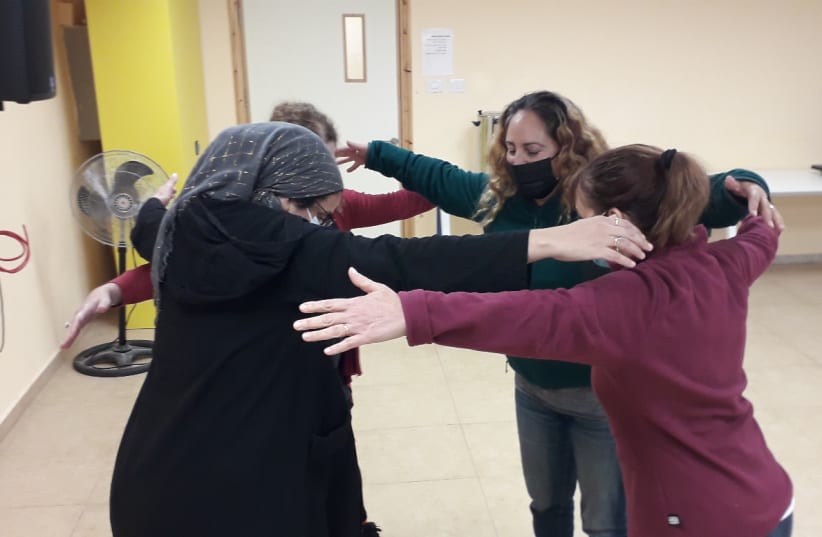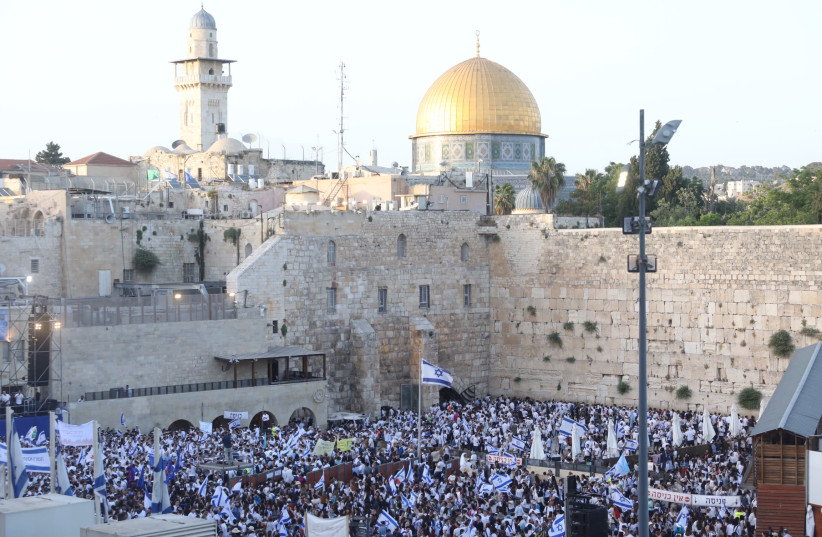For many years, I declared publicly: “Even if you pay me – I will not live in Jerusalem.” I really liked it, as a tourist; I came once a month, I traveled, I saw women, I enjoyed the atmosphere. But as someone who was born in the southern region, full of tranquility and desert, Jerusalem always seemed to me as a crowded and tense place to live. And yet I have been living in Jerusalem for the last 9 years, a resident of the Kiryat Hayovel neighborhood. I came out of my partner’s employment necessity and I stayed because I want to raise my four children here. Today, I am a Jerusalemite by choice.
Kiryat Hayovel
When I look out the window of my house in the neighborhood, I see everyone: ultra-Orthodox, secular, religious and traditional, sons and daughters of different cultures, streams, identities and ethnicities. I am studying an Arabic course at the Rashut Harabim house with an Arab practitioner from the north, who lives a few blocks away from me.
I go down to the garden and chat about the planned construction-evacuation of the secular neighbor, about the kindergartens with the ultra-Orthodox neighbor, about what is happening in Ukraine with the neighbor who immigrated from Russia and what I cooked for Shabbat with another neighbor, of Ethiopian descent.
As someone who grew up in religious-national education, Jerusalem Day was always for me the parade of flags and a celebration of joy for the liberation of Jerusalem during the Six Day War. Since I have lived in Jerusalem, I have discovered a different Jerusalem, with a much wider, more complex story, full of colors and also full of hope.
Why celebrate Jerusalem Day?
Today, I celebrate Jerusalem Day for connections and tolerance. To me, this is Jerusalem, it has many faces. Jerusalem Day is an opportunity to talk about the relations in this city – among other things, and in a very relevant way to the neighborhood in which I live, about the relations between ultra-Orthodox, secular and everything in between.
My neighborhood is very communal. It has cultural events for young families, youth, young adults and the third age, community picnics, a cooperative pub, a theater for social change, projects the residents initiate themselves, cooking for women who give birth from within the community, mutual assistance, endless community WhatsApp groups, and more.
Kiryat Hayovel is also a neighborhood where the members of the various sectors live together – sometimes forced to fight over public buildings: will a building become an ultra-Orthodox school or a community activity center for a community of secular graduates who live in the neighborhood? Cultural events in a diverse neighborhood are also a complex issue: Are movies on Shabbat in a public community center or a public garden legitimate? Is a boom box with songs that announce the entry of Shabbat with holy songs legitimate?
LIVING IN a mixed neighborhood brings us many possibilities for meeting, as well as for the growth and expansion of our story. That is why our neighborhood is full of civic initiatives of men and women who understand that change will come from them, together with the bodies that operate from above, such as the municipality, the community center and philanthropy, such as the Shahaf Foundation and the Russell Berrie Foundation – who understand that there is an opportunity here to promote community life, with involved citizens who care – and invest money, resources and time here to help us succeed.
The residents who live here meet the conflicts and the opportunities, and want to make the change they wish for themselves. This understanding produces many connections that aim to find the common good – with each other or at least side by side. In recent years, many projects have been established aimed at connecting the different populations in the neighborhood, resolving disputes and creating joint activity.
One of these projects is Na’ot Ve’dorshot (Moving and Learning), which was established three years ago, in cooperation with the Jerusalem Municipality – young neighborhood division, the Mashu Mashu Theater and the Plugta Association. Later, the Shahaf Foundation and the Russell Berrie Foundation entered into the partnership, as part of the Neighborhood for Everyone project and the Rashut Harabim, and together they created a wonderful mosaic of multidimensional observation of the neighborhood.
In each cycle of the program, about 15 women from the various sectors of the neighborhood take part: ultra-Orthodox, secular, religious and traditional. Through movement, drama, collaborative learning of Jewish texts and common discourse, we discover that the similarities are greater than the differences, and along the way manage to understand a little more about different cultures than ours and the whole story.
Together we explore different aspects of femininity: what it is to be a woman, intergenerational connection, relationships, motherhood, our voice, sexuality and more. This week, the fourth class of the program began and 15 women embarked on a special personal-group-community journey, at the end of which they will hold a meeting for the diverse neighborhood women’s community.
To me, that’s where our power lies: in connections, in a real encounter, devoid of judgment, full of kind eyes and looking in and out without templates and screens, without harsh words on the keyboard, without hatred and criticism. Anyone who comes out of such a group comes out differently. She sees herself in a different light, she sees the other identities in a different light and many of them embark on broader community action.
This is Jerusalem, the real Jerusalem, the Jerusalem which is not just holy places, tourism, or history. This is Jerusalem, with many faces to it, many people who live there, meet, argue and connect.
I believe that “From Zion, the Torah will come out,” and from Jerusalem the message will come out. Coexistence is not an empty slogan – the communities that make up this country can live together, without walls, with tolerance for others, if we choose to truly observe and meet. This is Jerusalem Day 2022 for me: citizens who take responsibility for their lives and for the Jerusalem they want to live in.
The writer is the leader of the Na’ot Ve’dorshot social program in the Kiryat Hayovel neighborhood in Jerusalem.

